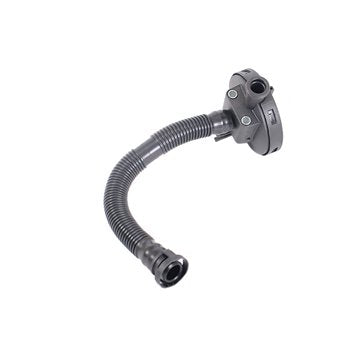Secure peak efficiency with a properly functioning clp engine.
Secure peak efficiency with a properly functioning clp engine.
Blog Article
Exactly How a Clp Engine Can Enhance Performance in Numerous Industries
The arrival of CLP engines notes a substantial shift in operational performance throughout different markets, driven by their capacity to optimize gas consumption and lessen downtime. Industries such as production and logistics stand to acquire substantially from their robust layout and regular power output, which assure to simplify operations and improve productivity. As companies progressively prioritize sustainability together with effectiveness, the role of CLP engines comes to be much more crucial. What stays to be seen is how these innovations will certainly shape the future landscape of commercial procedures and their effect on broader financial fads (clp engine).
Overview of CLP Engines
CLP engines, or Constant Liquid Propellant engines, stand for a considerable development in propulsion technology, especially for area applications. These engines make use of a continuous feed system that permits the continual expulsion of propellant, bring about improved effectiveness and performance contrasted to conventional strong or hybrid propulsion systems. By preserving a consistent circulation of liquid propellant, CLP engines can attain extra precise drive control, which is vital for navigating spacecraft in numerous mission situations.
The style of CLP engines incorporates advanced materials and innovative fuel monitoring systems. clp engine. This leads to lowered weight and increased reliability, important aspects for long-duration room missions. The continual procedure reduces the risk of combustion instability, a common difficulty in traditional rocket engines.

Benefits in Manufacturing
The production of Continual Fluid Propellant (CLP) engines offers several remarkable advantages that boost both performance and cost-effectiveness. One of the main benefits is the structured production process, which reduces the complexity connected with typical propulsion systems. By making use of fluid propellant, suppliers can accomplish greater precision in engine performance, causing maximized power outcome and minimized waste.
Furthermore, CLP engines assist in a greater level of modularity, enabling for less complicated assimilation right into different manufacturing lines. This adaptability can dramatically decrease lead times and enhance general functional versatility. Making use of CLP modern technology likewise often tends to decrease the demand for comprehensive upkeep due to fewer moving components, which translates right into reduced downtime and operational prices.

Applications in Logistics
Leveraging Continuous Liquid Propellant (CLP) engines in logistics uses significant advantages in functional performance and integrity. These engines give a robust solution for numerous transport demands, allowing the smooth movement of goods throughout large distances. The fundamental layout of CLP engines permits consistent power output, which converts into smoother and extra foreseeable transportation timetables.
Among the essential applications of CLP engines in logistics is in heavy-duty products transport, where they can drive both ground and airborne lorries. Their ability to maintain high performance under differing tons conditions makes sure that delivery timelines are met, therefore improving customer contentment. Additionally, CLP engines can be integrated right into automated logistics systems, facilitating link real-time monitoring and maximizing course planning.
Furthermore, the toughness of CLP engines lowers upkeep downtime, enabling logistics firms to optimize their operational abilities. This is especially advantageous in warehousing operations, where effectiveness in managing and carrying products is essential. As logistics remains to progress, the assimilation of CLP engines represents a forward-thinking strategy that not just improves performance but also sustains the market's growing demands for integrity and speed.
Impact on Energy Effectiveness
Exactly How do Continuous Fluid Propellant (CLP) engines boost power effectiveness in transportation? CLP engines utilize a constant circulation of liquid fuel, maximizing combustion procedures and preserving a stable drive result. This design minimizes power losses associated with traditional combustion engines, where fuel delivery can differ and lead to inefficiencies.
The continuous procedure of CLP engines permits for a much more reliable thermal cycle, causing greater details impulse contrasted our website to standard engines. clp engine. This translates to reduced gas intake for the same amount of work done, significantly reducing operational costs across different transport markets, including air travel and maritime sectors
In addition, the capacity of CLP engines to keep ideal performance under differing tons conditions minimizes the requirement for regular velocity and slowdown, better improving gas efficiency. Boosted power performance not just contributes to cost financial savings however likewise leads to reduce greenhouse gas discharges, straightening with worldwide sustainability goals.
Future Trends and Innovations
Emerging innovations in Continual Liquid Propellant (CLP) engine innovation promise to reinvent the landscape of transport performance and sustainability. As industries pivot towards greener choices, CLP engines stand at the forefront, incorporating innovative materials and style methods that improve performance while reducing ecological effect.
Among the most promising patterns is the adoption of crossbreed systems that incorporate CLP engines with renewable resource resources. This harmony can enhance fuel intake and lower exhausts, lining up with international sustainability objectives. Moreover, innovations in computational liquid characteristics (CFD) are facilitating the design of more aerodynamically effective engines, resulting in decreased drag and improved gas effectiveness.
In addition, the development of smart monitoring systems is set to enhance operational performances. These systems utilize information analytics and IoT modern technology to enhance engine performance in real-time, guaranteeing that the engines run within their most reliable specifications.
As research study proceeds to check out alternative propellant formulations-- such as biofuels and synthetic gas-- the future of CLP engines looks encouraging. By taking advantage of these innovations, sectors can not just enhance their efficiency yet additionally contribute dramatically to a cleaner, more sustainable future in transport.
Final Thought
In final thought, CLP engines stand for a considerable advancement in efficiency throughout several sectors. The integration of innovative materials and fewer moving components decreases upkeep demands, while positioning with sustainability goals placements CLP engines as a critical innovation for the future.
Report this page